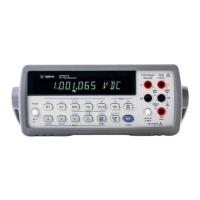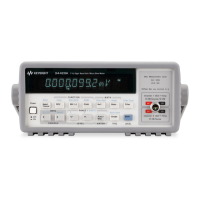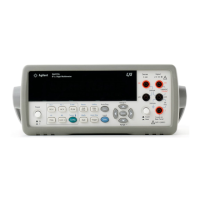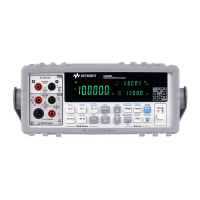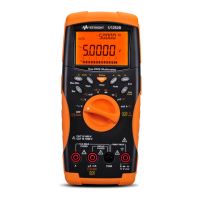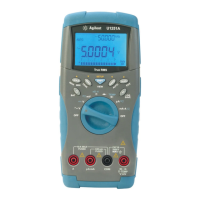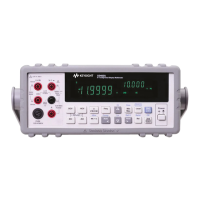LFILTER
190 Chapter 6 Command Reference
circuitry only. This does not affect the coupling of the signal being measured.
Power-on coupling = AC.
Default coupling = AC.
Remarks • Level triggering can be used for DC voltage, direct-sampling, and sub-sampling.
(The LEVEL command also affects the zero crossing threshold and the input
signal coupling for frequency and period measurements.) For DC voltage and
direct-sampling, level triggering can be used as the trigger event (TRIG LEVEL
command) or the sample event (NRDGS n, LEVEL command). For
sub-sampling, level triggering can be used for the sync source event only (SSRC
LEVEL command).
• Because of hysteresis, the actual level triggering point is the specified
percentage ±4% of the measurement range.
• Autozero should be disabled when using level triggering (AZERO OFF
command) for DC voltage measurements. (Autozero doesn't apply to direct- or
sub-sampling.)
• Query Command. The LEVEL? query command returns two responses
separated by a comma. The first response is the currently specified percentage.
The second response is the present coupling mode. Refer to "Query Commands"
near the front of this chapter for more information.
• Related Commands: DCV, DSAC, DSDC, LFILTER, NRDGS, SETACV,
SYNC, SLOPE, SSAC, SSDC, SSRC, TRIG
Example 10 OUTPUT 722;"TARM HOLD" !SUSPENDS TRIGGERING
20 OUTPUT 722;"PRESET DIG" !FAST DCV MEASUREMENTS, 10V RANGE
30 OUTPUT 722;"TRIG LEVEL" !SELECT LEVEL TRIGGER EVENT
40 OUTPUT 722;"SLOPE POS" !TRIGGER ON POSITIVE SLOPE OF SIGNAL
50 OUTPUT 722;"LEVEL 50,AC" !TRIGGER AT 50% OF 10V RANGE (5V) AC-COUPLED
60 END
LFILTER
Level Filter. Enables or disables the level filter function. When enabled, the level
filter function connects a single pole low-pass filter circuit to the input of the
level-detection circuitry. The low-pass filter has a 3-dB point of 75 kHz and
prevents high frequency components from causing false triggers.
coupling
Parameter
Numeric
Query
Equiv. Description
DC 1 Selects DC-coupled input to level-detection
circuitry
AC 2 Selects AC-coupled input to level-detection
circuitry
